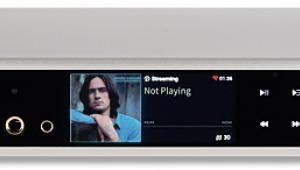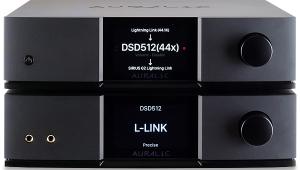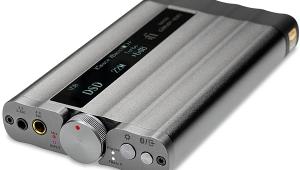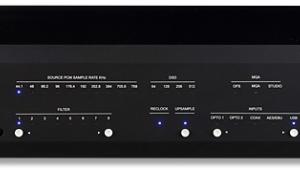Merason DAC1 USB DAC

 Top dog in a range of just two outboard DACs from Swiss brand Merason, the DAC1 is a modern-day example of 'less is more' audiophile thinking. We lift the lid and investigate
Top dog in a range of just two outboard DACs from Swiss brand Merason, the DAC1 is a modern-day example of 'less is more' audiophile thinking. We lift the lid and investigate
In common with a lot of HFN readers, I have a bit of a 'thing' about overly complex digital devices. I'm not referring to input flexibility – many of us will have systems in which different flavours of digital connection are accommodated, from USB links from a computer to good old S/PDIF from a CD player or the like. No, what I really find obstructive is devices bristling with digital-domain options, from filters to dither to PLL bandwidth and the like, all of which often look like an exercise in 'because we can' – a facilities arms-race – rather than being of any real-world assistance to the user.
I've found myself railing against such over-provision, suggesting that buyers will be tempted to spend too much time fiddling, to the detriment of, well, you know, actually listening to the music. By contrast, there's absolutely no such problem with the Merason DAC1 we have here. This £4195 converter, available in a choice of black or white fascia finishes (with chromium nickel steel available at a slightly startling £2400 premium), is designed as a simple, straight-down-the-line unit. You plug in a digital source, connect the output to your amplifier or preamp via unbalanced RCAs or balanced XLRs, and you're done.
Beat The Clock
That's not to say that care hasn't been taken in the build of the unit. Located in Worb, a short distance east of Bern, manufacturer Niedal Audio Lab makes great play of the Swissness of its products, from the precision of the build to the accuracy of the crystal clock, and while the Merason DAC1 doesn't exactly boast bank-vault heft at just 8kg (the optional stainless steel front slab upping that by 3kg), it feels solidly put together and beautifully finished, as one might expect at the price.

The simplicity is a conscious decision, the company taking a stand against the complexity and what it sees as pandering to fashion found elsewhere in this market sector. Eschewing the ultra-high sampling rate capability of many rivals, and the likes of DSD and MQA, the DAC1 is designed purely for PCM-based files, from 44.1kHz/16-bit up to 192kHz/24-bit. It says that the idea 'was not to build a unit to enable the adoption of multiple, new formats using new-to-market technologies'. It continues, 'rather, the goal is to take proven concepts and components, that are assembled with care and attention', adding that the DAC1 is designed as 'one that allows the music to shine brighter than over-inflated specification sheets'.
Admittedly that stance may dissuade as many potential buyers as it encourages – I'm not sure I'd now buy a DAC unable to play my collection of DSD files in native form (rather than crunching them down through a PCM-sized 'hole') – but it does allow the company to keep the construction of the DAC1 simple and direct, optimising the circuitry for its singular task rather than having to make concessions to flexibility.
Silver Service
Editor PM examines the digital workings in more depth but in essence the DAC1 uses a pair of Burr-Brown/TI PCM1794A converters in differential mode. Downstream of this is a proprietary stage that converts the DACs' current output to a voltage that feeds a Class A buffer and low-pass filtering. Choice passive components include silver mica capacitors.

Meanwhile, the signal path is fully balanced from the output of the DACs to the output stage of the unit, and uses symmetrical L/R signal paths, with foil capacitors to protect against DC at the output. The designers also say that 'great attention has been paid to the layout of the motherboard so that an extraordinarily high signal-to-noise ratio could be achieved', the specification claiming this as greater than 120dB.
As you might expect from its brief, the DAC1 is easy to set up and use: one button on the front panel powers it on and off, while the other selects between the optical, coaxial, AES/EBU and USB inputs. The latter may, at some point, mutate into an I2S input, but I'm not sure about the wisdom of this. Yes, there may be a growing number of digital devices employing I2S, but surely for most users a simple USB-B 2.0 port is of more use?
Indicators for the various inputs are provided on the front panel, along with a 'lock' lamp and one to show a USB link is connected, but that's about your lot.





















































